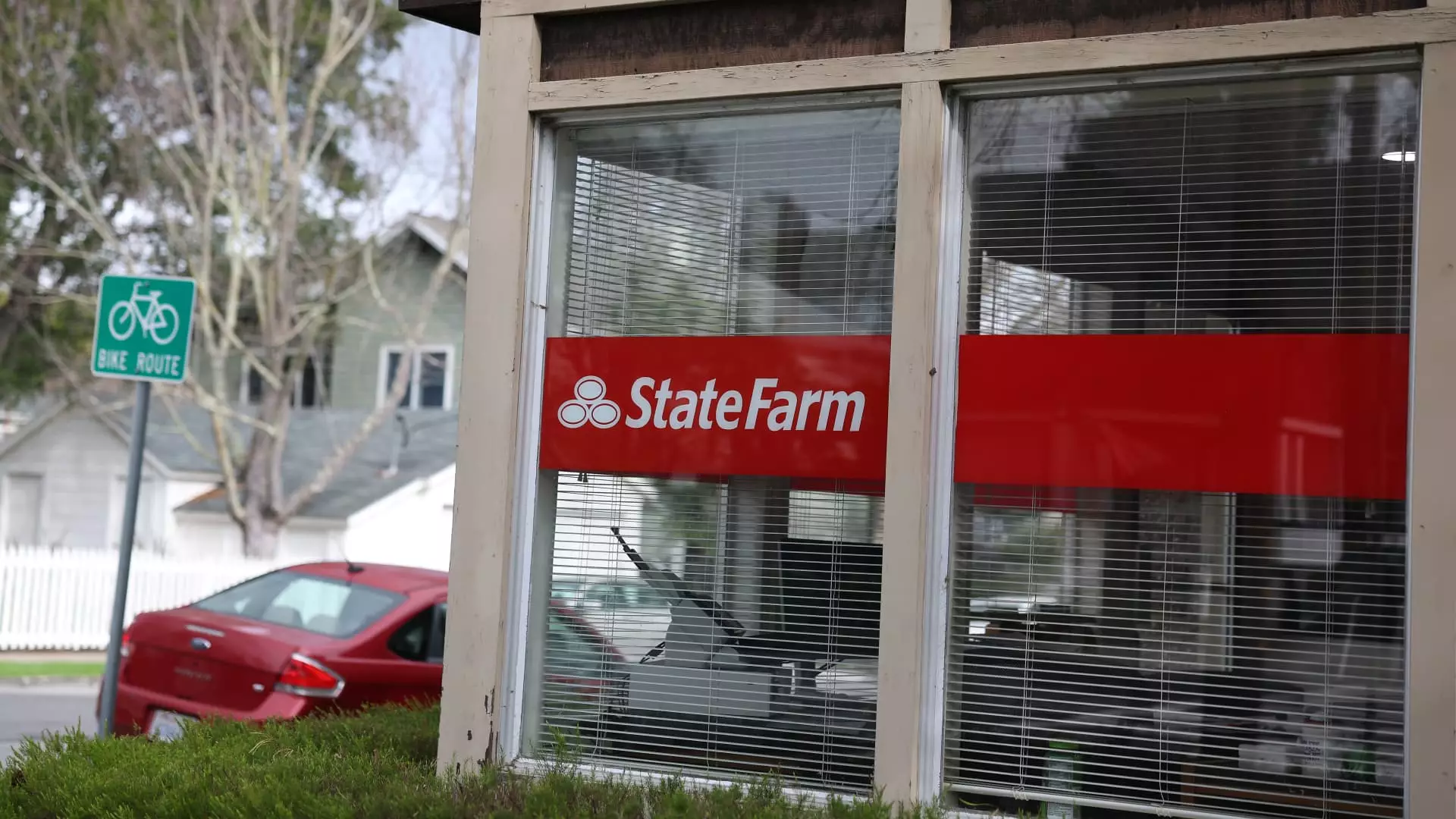This week, State Farm is presenting its case for significant rate increases before an administrative judge in Oakland, California. The stakes couldn’t be higher, as the insurer faces financial turmoil exacerbated by the unprecedented devastation wrought by recent wildfires. An attorney for the California Department of Insurance wasted no time describing the precariousness of this situation by likening it to the Titanic, warning that while the iceberg is in sight, there’s a fleeting window to avert catastrophe. Unfortunately, for nearly three million Californians with policies from State Farm, that window might be fleeting as the company seeks an emergency rate hike to stay afloat.
The juxtaposition of natural disaster and insurance failure paints a dire picture. With State Farm General commanding roughly 20% of the homeowners market and an estimated $7.6 billion in direct losses stemming from the recent Los Angeles wildfires, the stakes have never been higher. The request for a 17% increase does not only signify cost; it symbolizes a struggle for survival in an increasingly volatile market. Meanwhile, an alarming 12,390 claims have already been filed. For homeowners, these numbers aren’t just statistics; they hint at a future fraught with uncertainty and inflated costs.
Inflated Costs vs. Justifications: A Questionable Equation
As the hearing unfolds, it’s essential to dissect why State Farm finds itself in this position. The argument for a greater financial cushion is attributed to five years of weak underwriting performance and substantial losses from natural disasters that have escalated dramatically in California. Yet, stakeholders have their doubts. Consumer advocacy groups, such as Consumer Watchdog, assert that the company has failed to substantiate its claims and justify its rate increases. The organization’s lead attorney, William Pletcher, has pointed out inconsistencies in State Farm’s proposals, suggesting a lack of transparency.
This raises important questions about accountability. Are insurance companies like State Farm passing the buck for their mismanagement instead of making necessary operational changes? The reduction from a 22% to a 17% increase indicates at least a semblance of consideration for consumer pushback, but it’s a temporary fix that risks becoming a pattern of reactive strategy rather than proactive decision-making.
Homeowners in the Crossfire: A Rising Tide of Economic Dislocation
Imagine facing the stark reality of the rising costs to protect your home, coupled with the risk of being dropped by your insurer altogether. This is the current battleground for California homeowners. The insurance environment has become so perilous that State Farm has stopped writing new homeowners insurance policies altogether. The ramifications of this decision are not just economic; they threaten the very stability of communities.
Financial instability and rising natural disaster risks have compelled some homeowners to look to the state’s FAIR plan—an insurer of last resort. However, as economist David Appel points out, this alternative has ballooned in size without adequate capacity to reliably cover the demand. Thus, the plight of homeowners discarded by profit-centric insurers becomes a crisis of wider social significance, endangering whole neighborhoods and further deepening economic divides.
The Regulatory Dance: Bureaucratic Responses to Market Volatility
California’s approach to insurance regulation is coming under scrutiny as it tries to engineer a “Sustainable Insurance Strategy.” With a plan aimed at allowing insurers to factor in catastrophe modeling and the costs of reinsurance into their pricing, the hope is for a stabilized insurance marketplace. However, one has to wonder if this bureaucratic maneuvering will genuinely rectify the systemic issues contributing to this ongoing crisis or simply serve as a Band-Aid on a deep wound.
The California Department of Insurance, which currently supports State Farm’s rate increase, needs to tread carefully. The challenge lies in balancing necessary support for insurers while also protecting consumers from excessive fee hikes that could upend their financial stability. If regulators are too lenient, they risk permitting a culture in which insurance companies can pass costs onto consumers without adequate justification.
Looking Forward: A Crisis Demands a Collective Response
Moving forward, it’s clear that the insurance crisis in California requires more than just transient fixes. While rate increases may be justified under certain circumstances, they shouldn’t come at the expense of average homeowners. Companies like State Farm have a responsibility to maintain sustainability not only for themselves but for the communities they serve. If the insurance landscape continues to deteriorate, the long-term implications could be far-reaching, affecting not only homeowners but also the economic fabric of California itself.
In this complex interplay between insurers, regulators, and consumers, a solution can only emerge through transparency, accountability, and a genuine commitment from all parties involved to ensure that no policyholder is left without adequate protection when disaster strikes. A collaborative approach is necessary—one that recognizes both the need for profitable insurance practices and consumer welfare. The painful truth is that unless significant changes occur, we may soon witness a new reality where essential services like homeowners insurance become unattainable for many, undermining the very essence of community stability.

